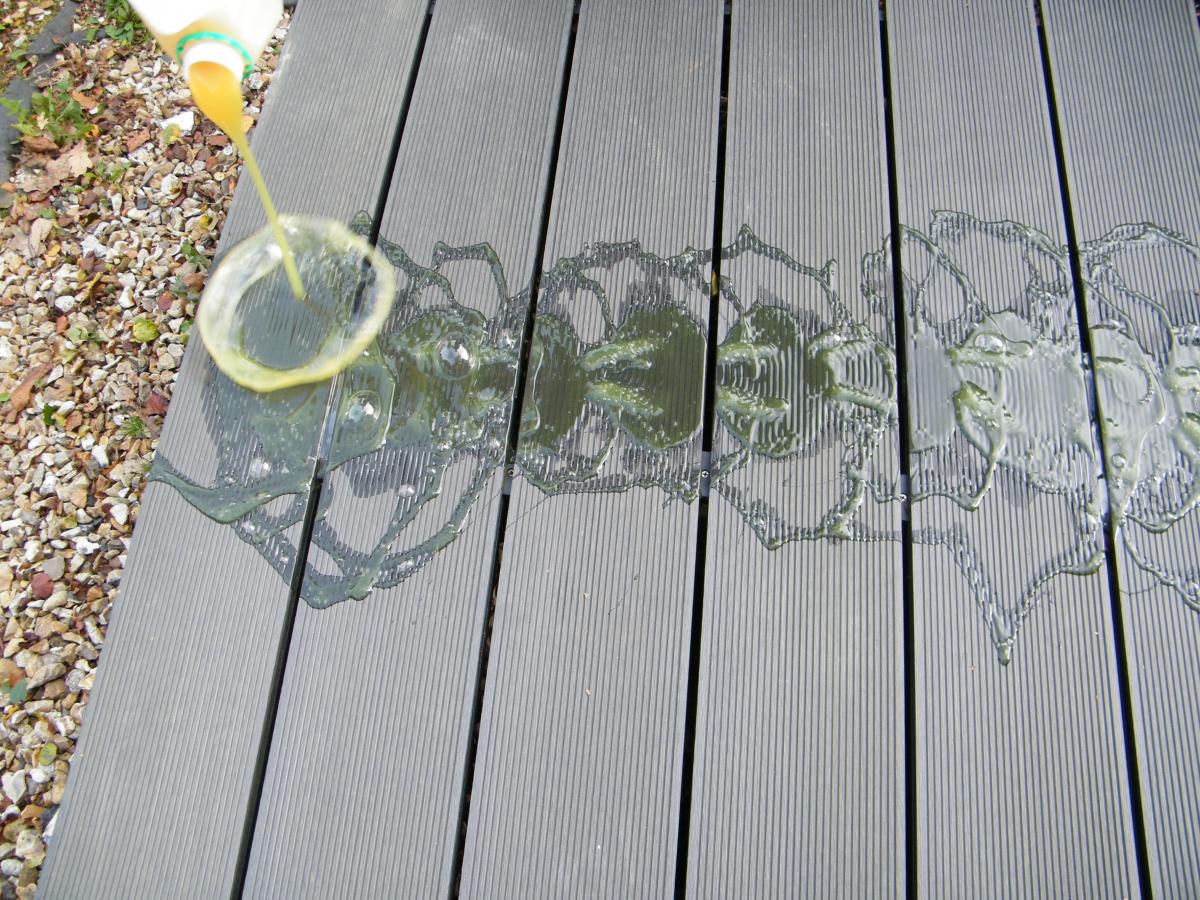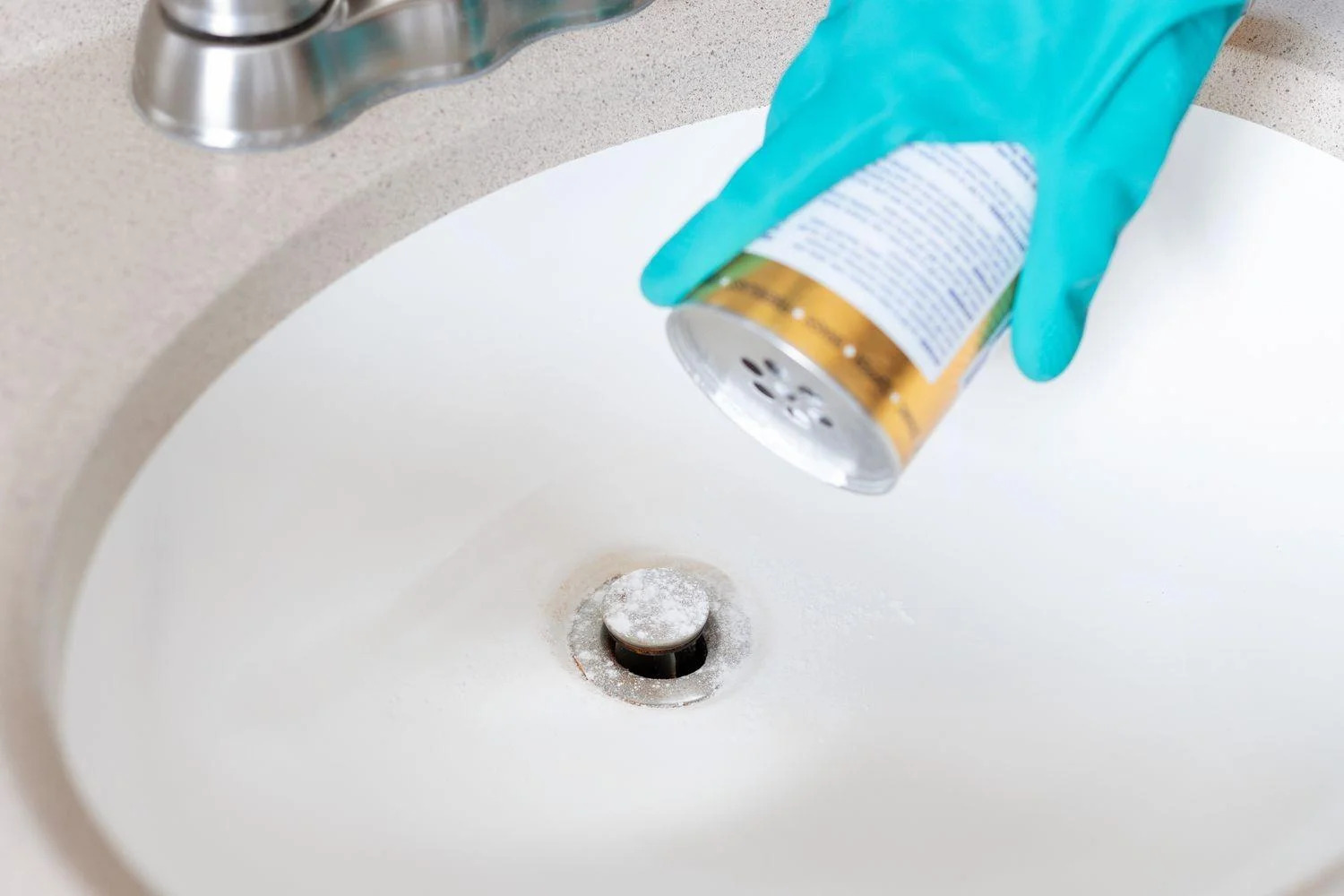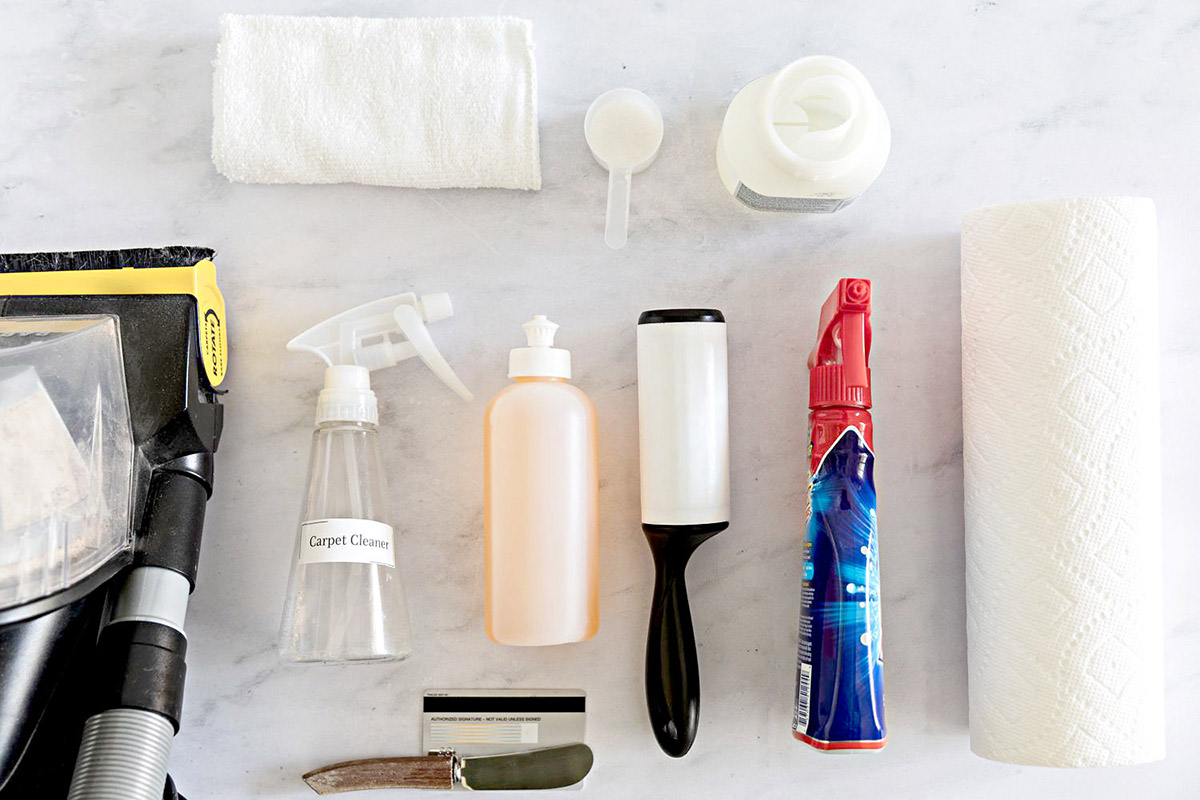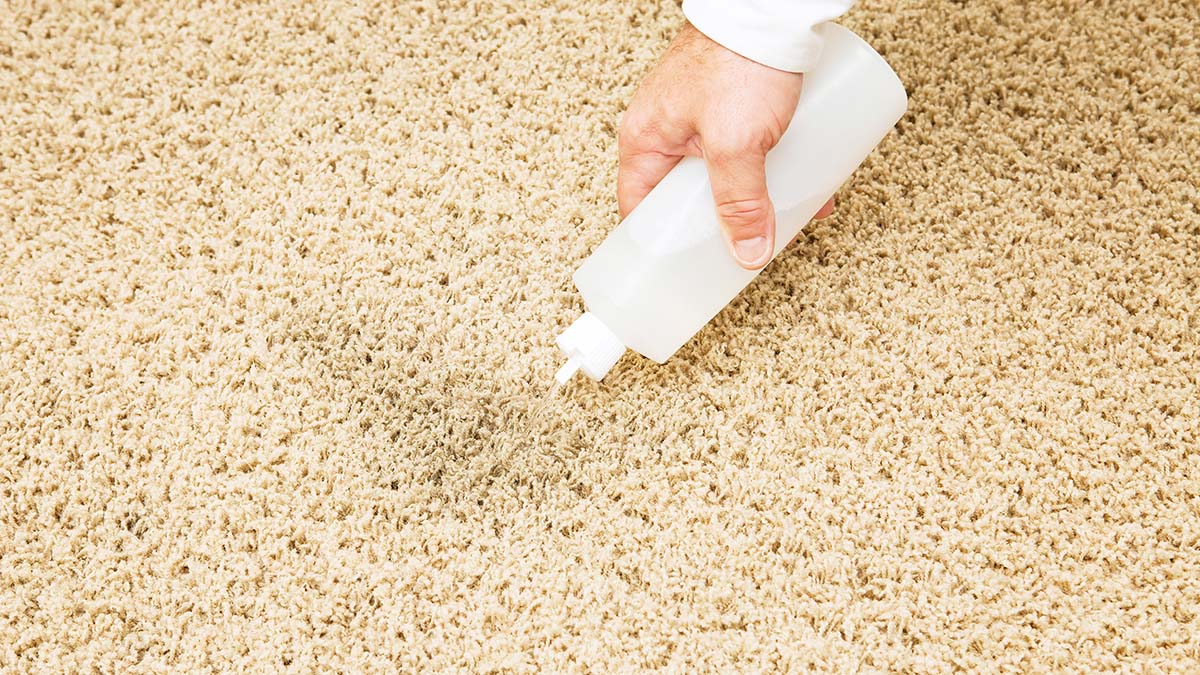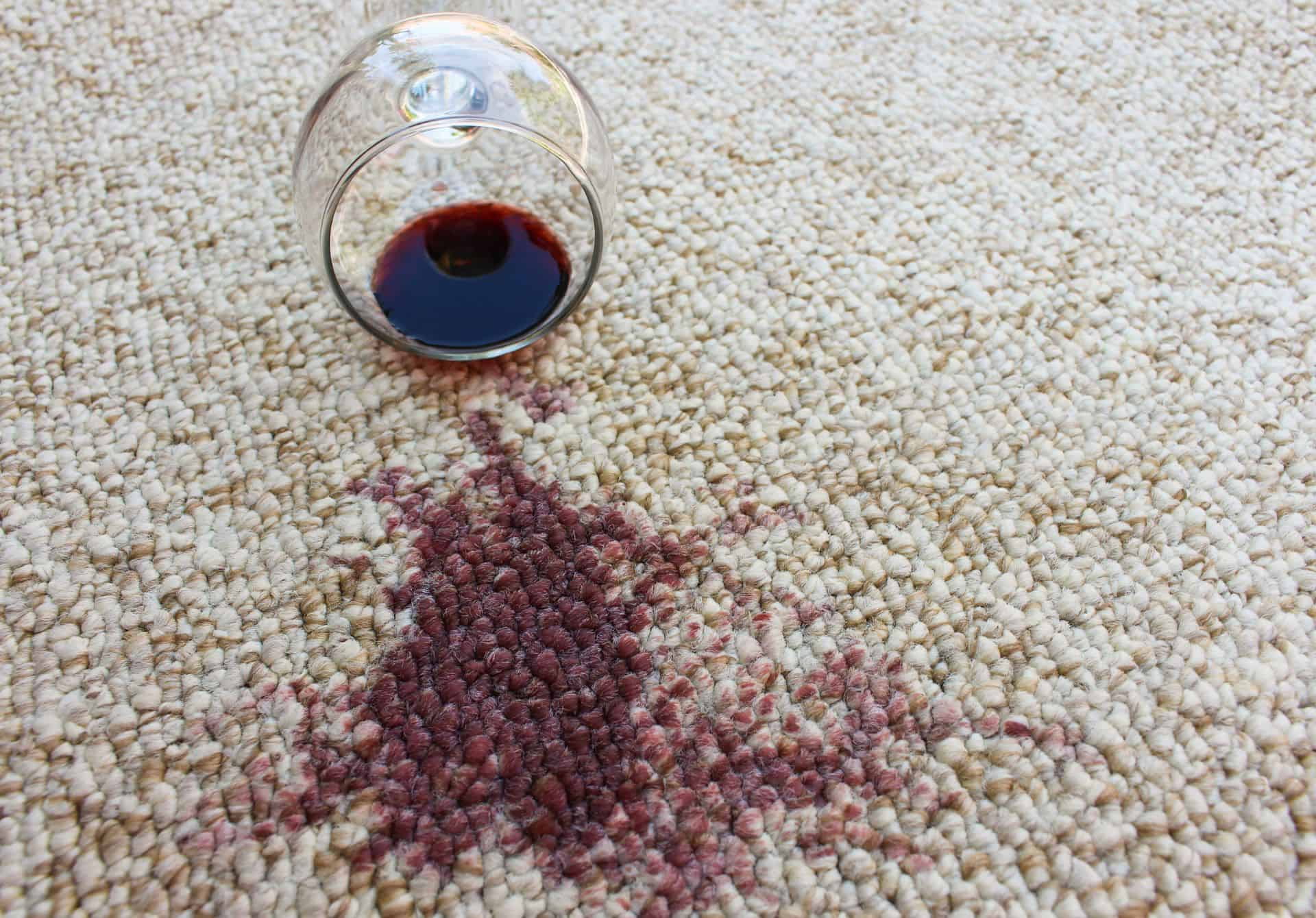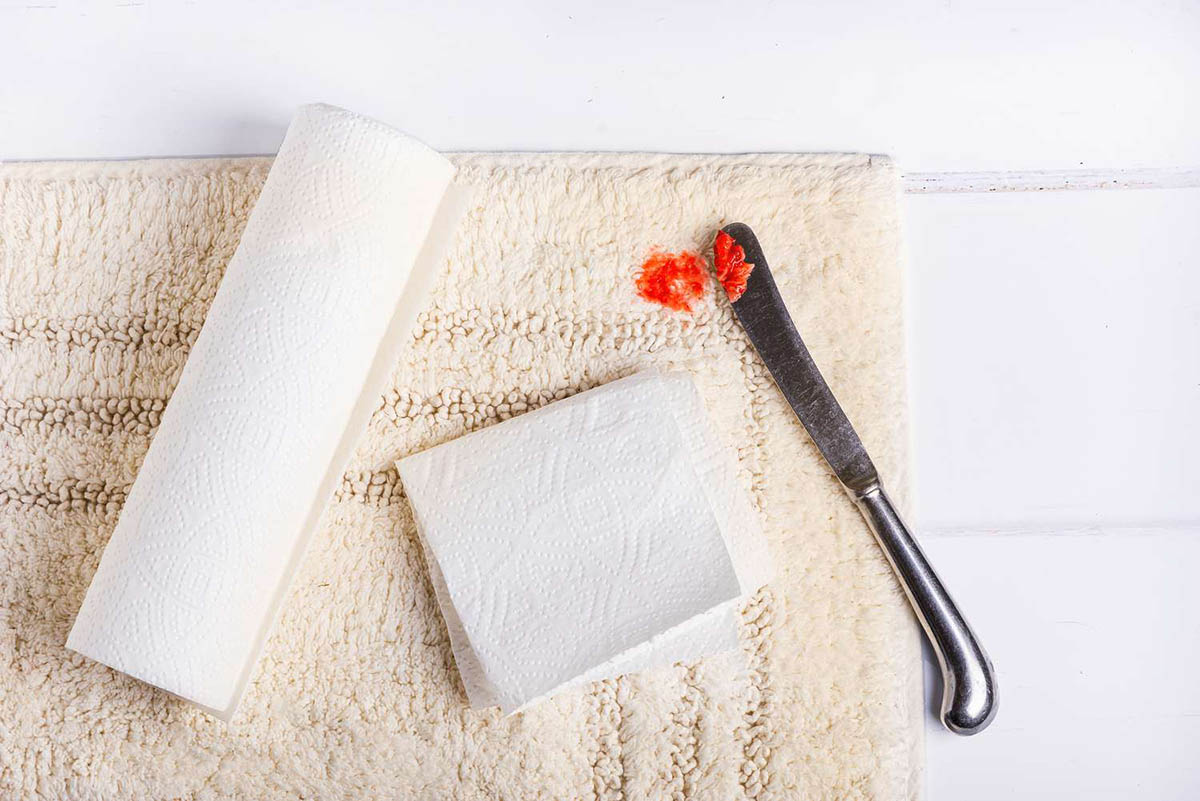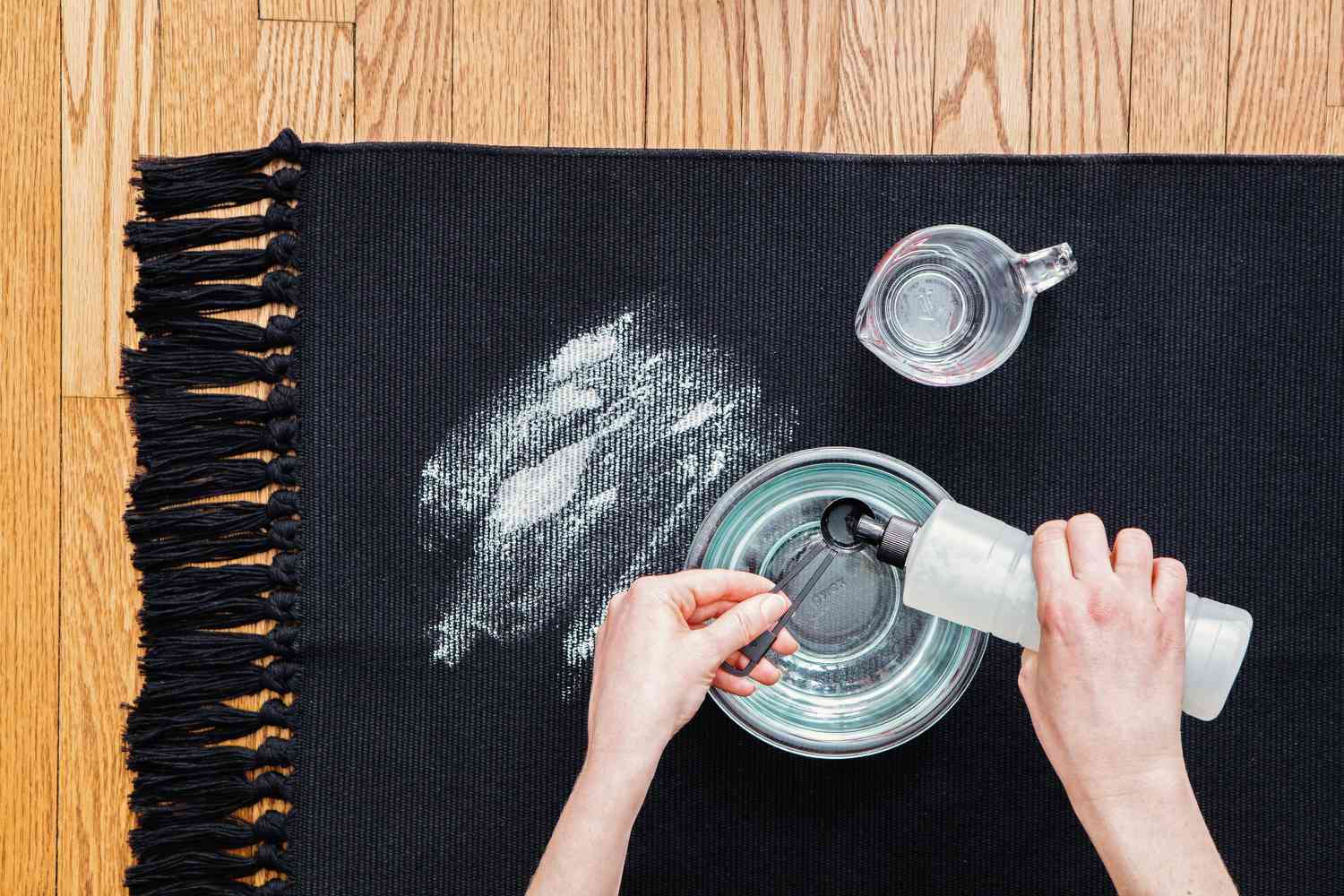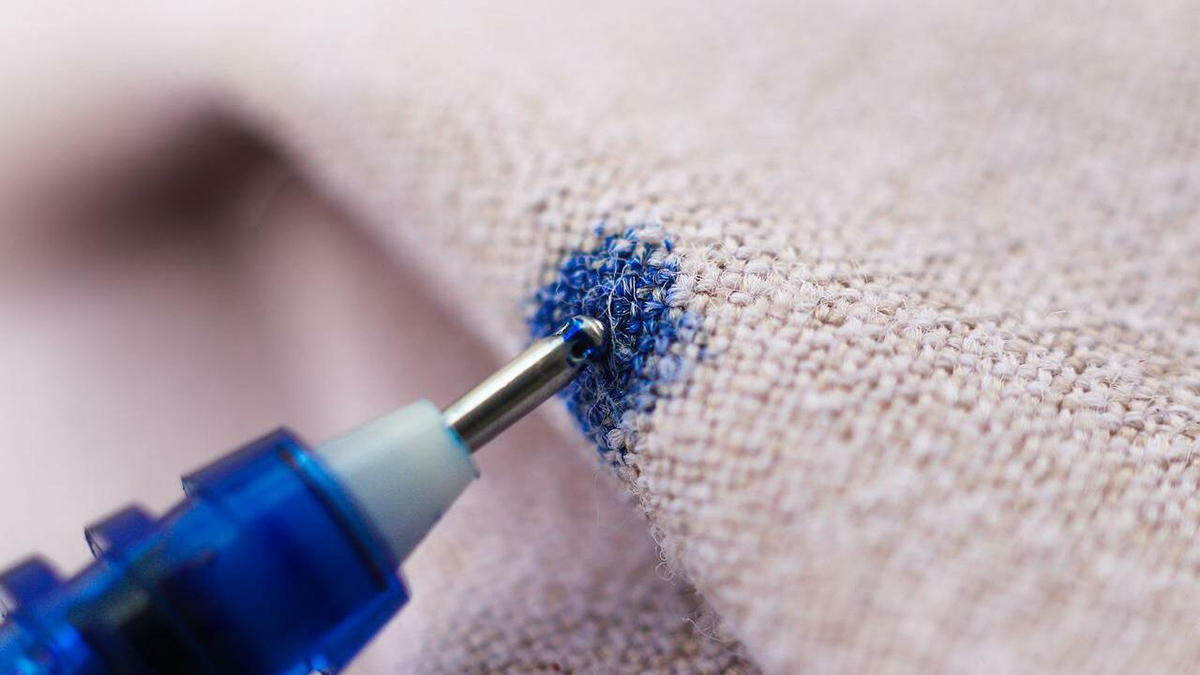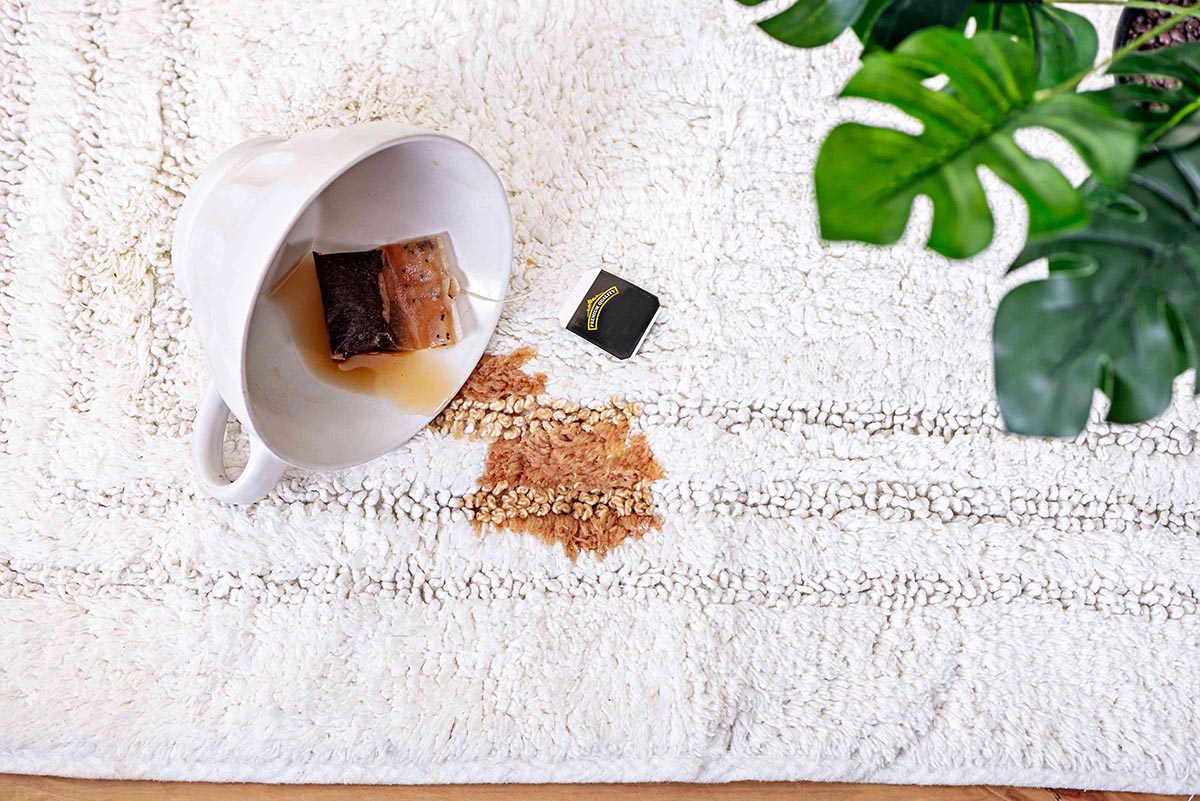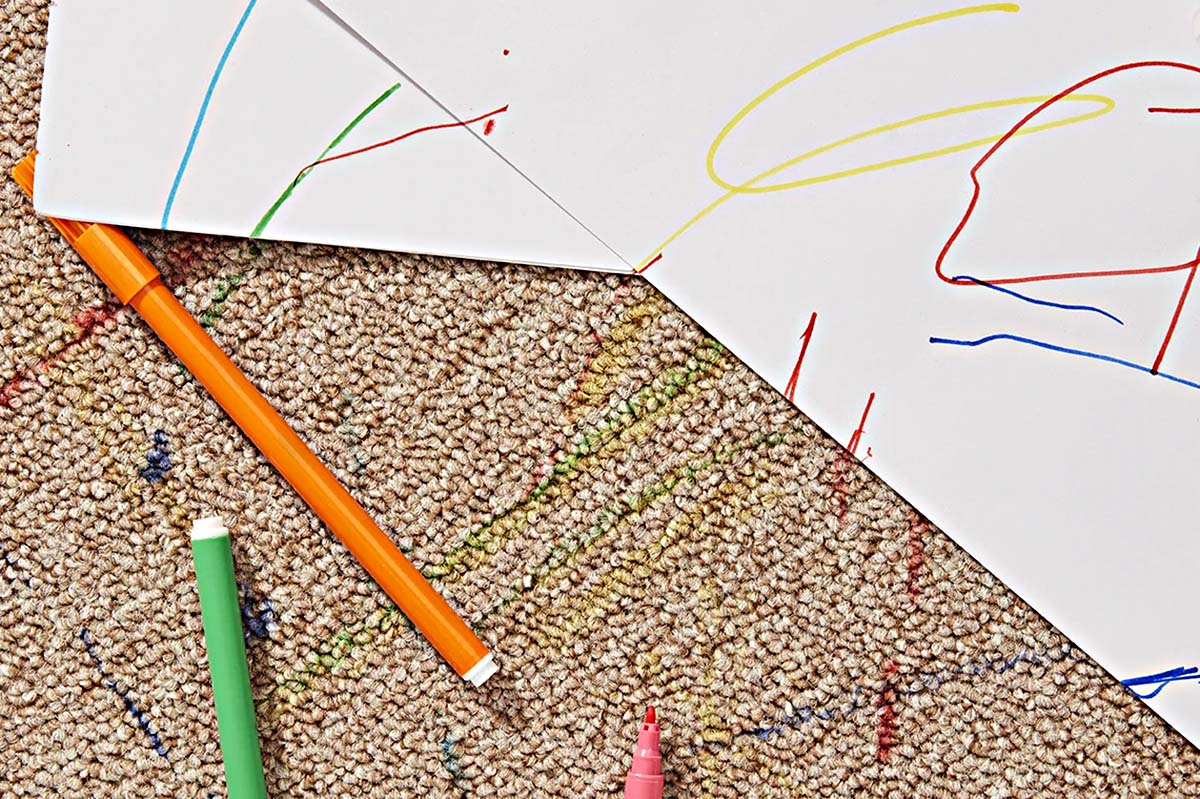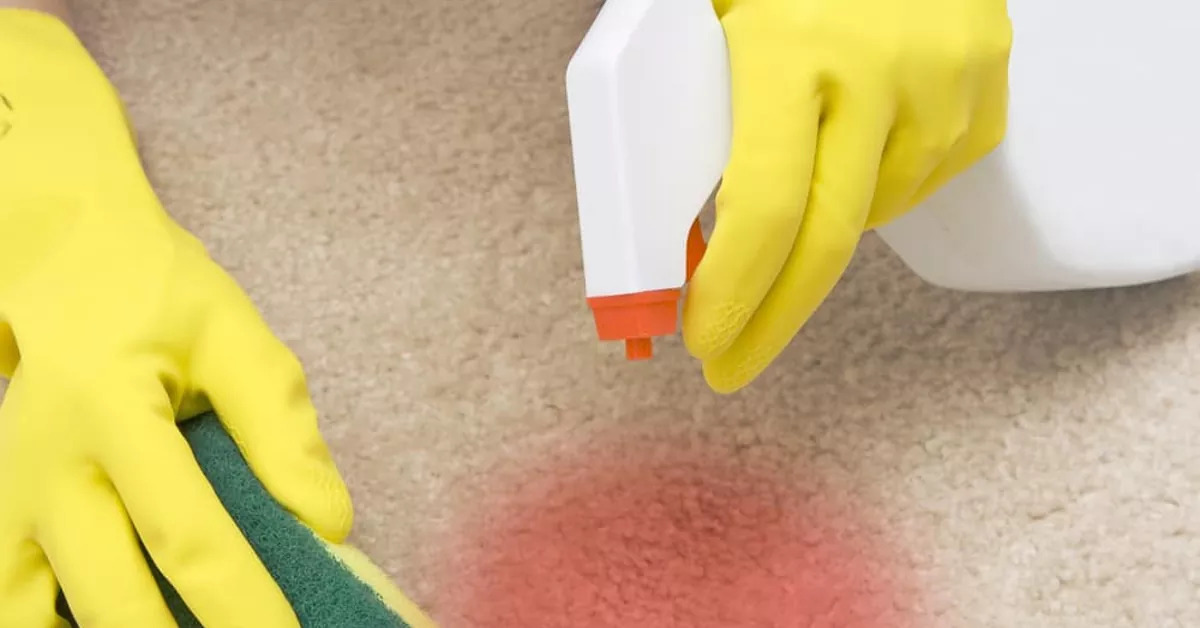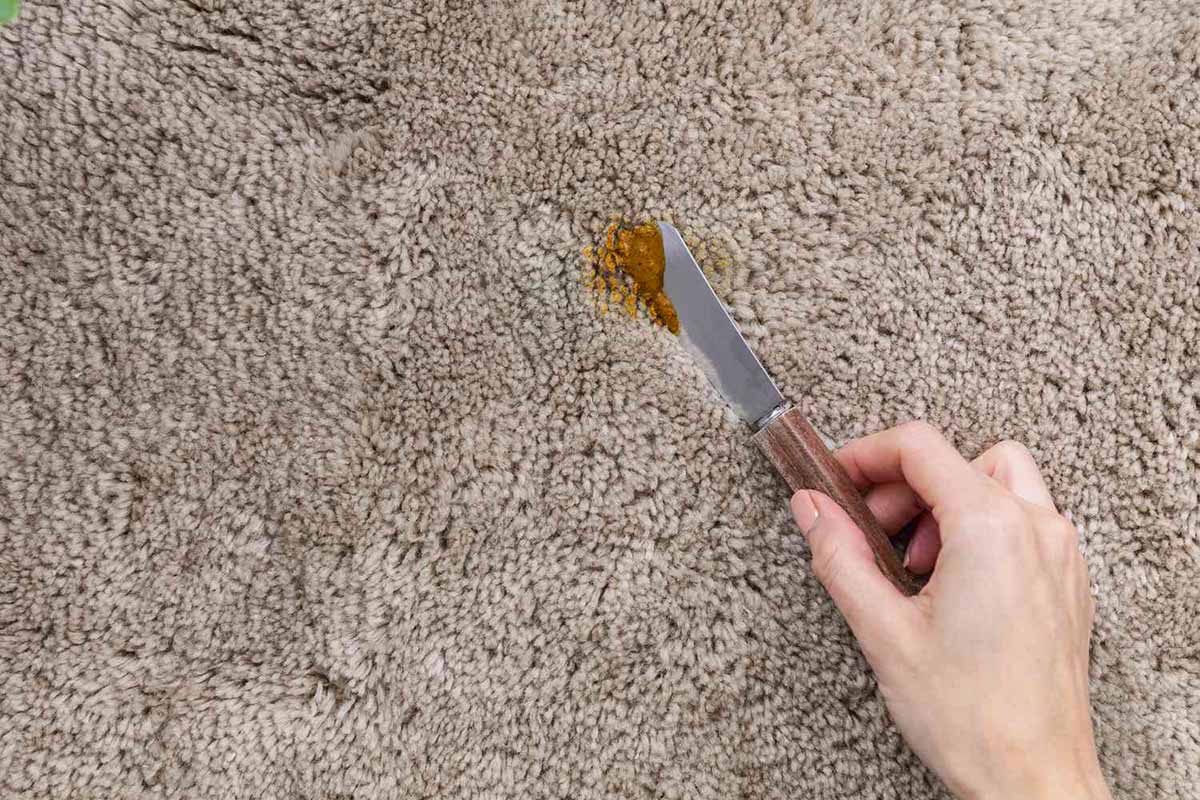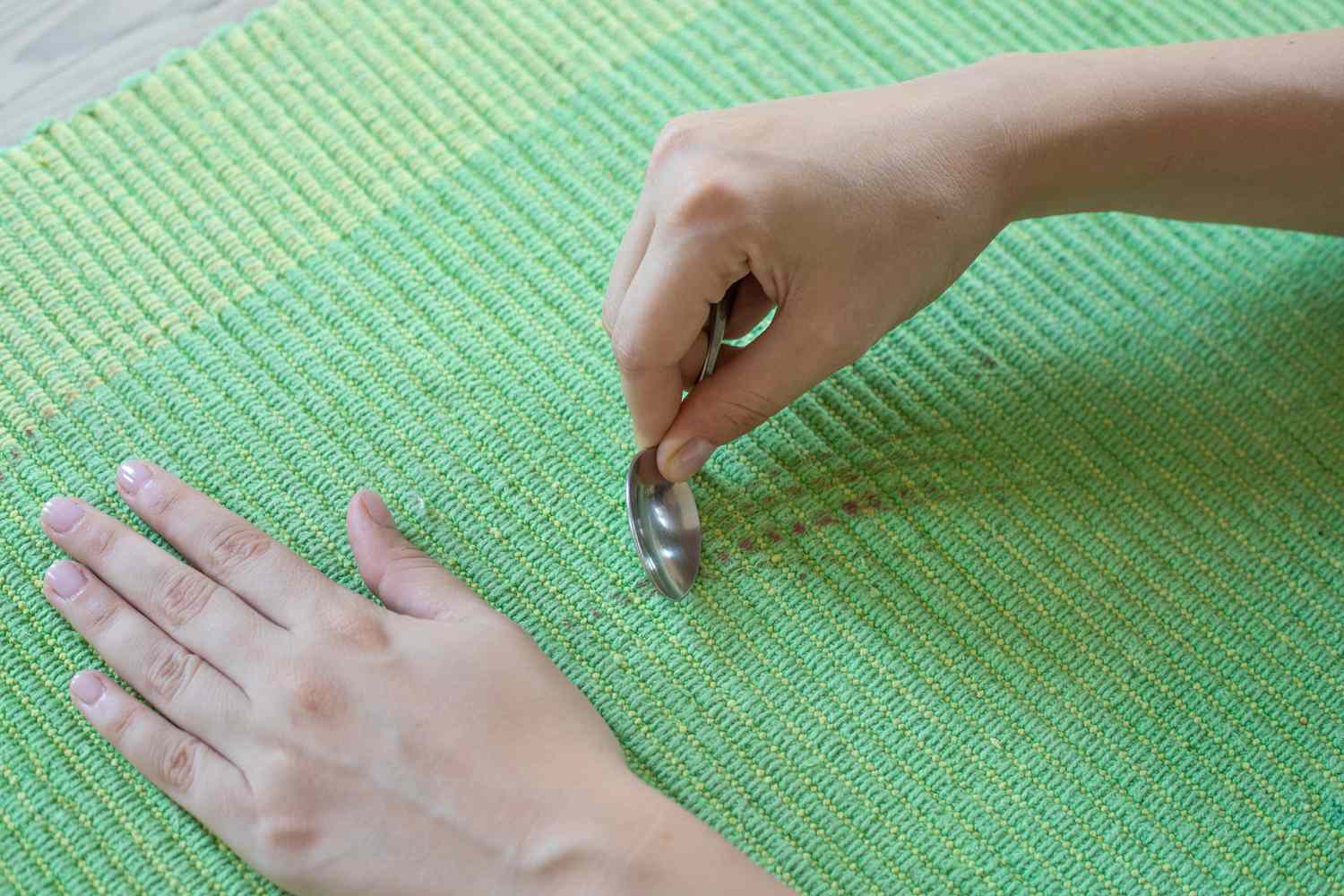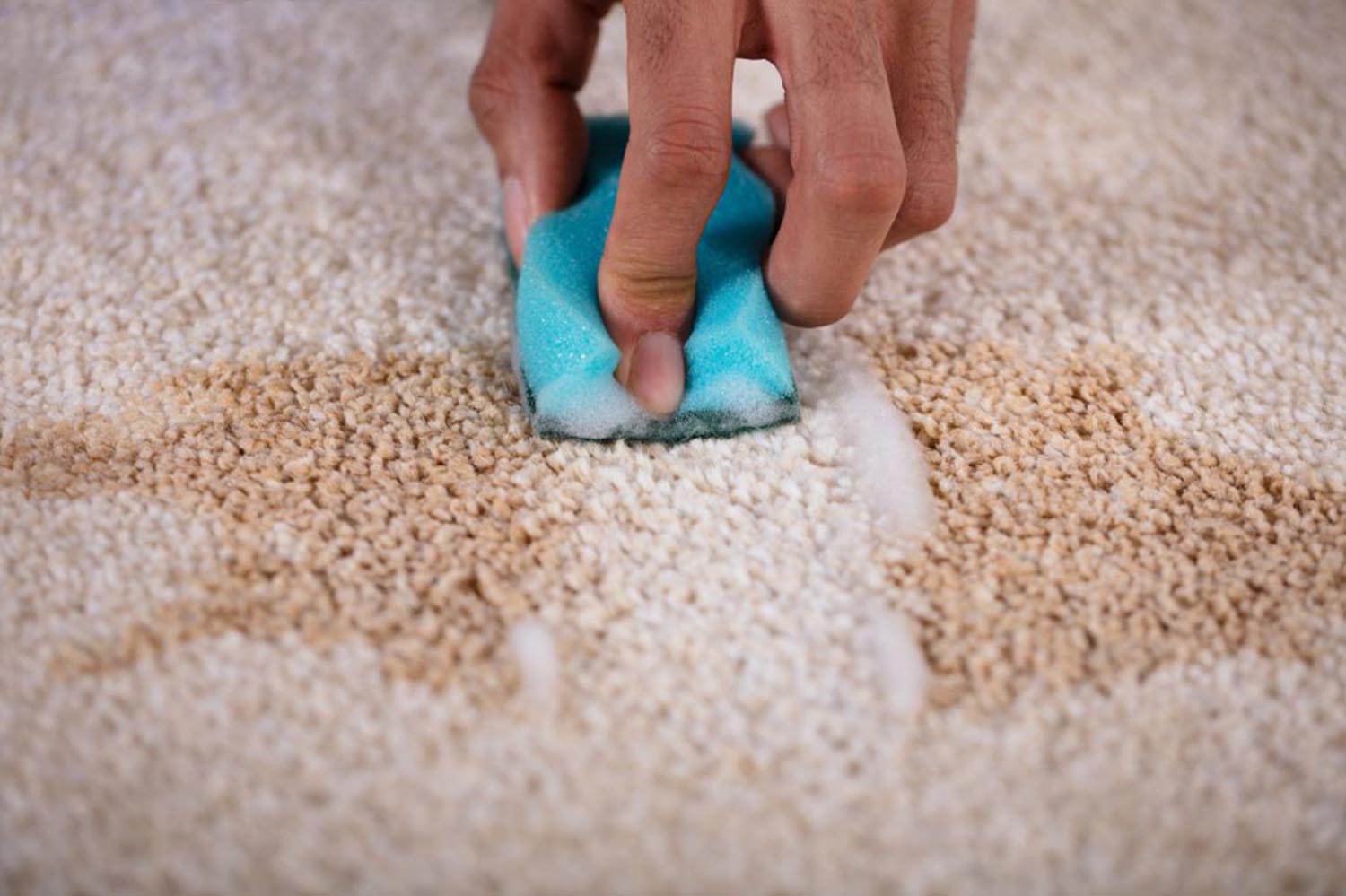

Articles
How To Remove Rust Stains From Carpet
Modified: December 14, 2023
Learn effective techniques to remove stubborn rust stains from your carpet with our informative articles. Say goodbye to unsightly stains and restore the beauty of your carpet.
(Many of the links in this article redirect to a specific reviewed product. Your purchase of these products through affiliate links helps to generate commission for Storables.com, at no extra cost. Learn more)
Introduction
Welcome to our comprehensive guide on how to remove rust stains from carpet. Rust stains can be a common and frustrating problem, especially if left untreated. Maybe you accidentally spilled a drink on your carpet, and it left behind an unsightly rust stain. Or perhaps you discovered a rusty object, such as a nail or a metal ornament, that has left a stain on your carpet.
Whatever the case may be, it’s essential to address rust stains promptly to prevent them from becoming permanent eyesores. In this article, we will guide you through the step-by-step process of removing rust stains from carpets effectively. So, let’s roll up our sleeves and get started!
Key Takeaways:
- Act quickly and use a homemade cleaning solution of white vinegar, lemon juice, and baking soda to effectively remove rust stains from your carpet. Remember to test the solution on a small area first to avoid any damage.
- Implement regular maintenance, consider professional cleaning, and use preventative measures to keep your carpet stain-free. By following these tips, you can successfully tackle and prevent rust stains on your carpet.
Read more: How To Remove Rust Stains From A Carpet
Understanding Rust Stains
Before we dive into the process of removing rust stains from carpet, it’s essential to understand what causes these stains and why they can be so stubborn. Rust stains occur when iron or metal objects come into contact with moisture, causing a chemical reaction that results in the formation of iron oxide – commonly known as rust.
When rust comes into contact with carpet fibers, it can leave behind a reddish-brown stain that is not only unsightly but can also be challenging to remove. The porosity of carpet fibers allows the rust to penetrate deep into the material, making it harder to eradicate.
Rust stains can occur from a variety of sources, such as rusty pipes, leaking appliances, or even from metal furniture or objects that have come into contact with wet carpet. These stains can appear quickly or develop gradually over time, depending on the extent of the rusting process and the porosity of the carpet material.
It’s important to note that not all carpet types react the same way to rust stains. Natural fibers such as wool or cotton may be more susceptible to staining compared to synthetic fibers like nylon or polyester. Additionally, the age and condition of the carpet can also impact how easily the stains can be removed.
Now that we have a better understanding of what rust stains are and why they can be challenging to remove, let’s move on to the next step in our journey towards a rust-free carpet: preparing the cleaning solution.
Preparing the Cleaning Solution
Before you begin tackling the rust stains on your carpet, it’s crucial to gather the necessary ingredients to create an effective cleaning solution. You’ll need a few common household items to prepare the solution:
- White Vinegar: Vinegar is an excellent natural cleaner that can effectively break down rust stains. Its acidic properties help to dissolve the iron oxide and lift the stain from the carpet fibers.
- Lemon Juice: Lemon juice, like vinegar, is acidic and can aid in rust stain removal. It also leaves behind a fresh, citrusy scent.
- Baking Soda: Baking soda acts as a mild abrasive and can help to lift stubborn rust stains from the carpet.
- Water: You’ll need water to dilute the cleaning solution and create a solution that is safe for your carpet fibers.
- A Spray Bottle: Using a spray bottle makes it easier to apply the cleaning solution evenly to the stained areas of your carpet.
Once you have gathered these ingredients, let’s move on to preparing the cleaning solution:
- In a bowl, mix equal parts white vinegar and lemon juice. For example, you can start with half a cup of each.
- Add a teaspoon of baking soda to the mixture and stir well. The baking soda will help enhance the cleaning power.
- Slowly add water to the mixture, stirring continuously, until you achieve a homogeneous solution. Aim for a total volume of about two cups.
- Transfer the cleaning solution into a spray bottle for easy application.
Now that you have your cleaning solution prepared, you’re ready to move on to the next step: testing the cleaning solution on a small, inconspicuous area of your carpet to ensure it doesn’t cause any damage or discoloration.
Testing the Cleaning Solution
Before applying the cleaning solution to the rust stain on your carpet, it’s essential to perform a patch test to ensure that the solution won’t cause any damage or discoloration. This step is particularly important if you’re working with a delicate or sensitive carpet material.
To perform the patch test, follow these steps:
- Choose a small, inconspicuous area of your carpet, such as a corner or edge.
- Spray a small amount of the cleaning solution onto the chosen area.
- Blot the solution gently using a clean cloth or paper towel.
- Inspect the tested area for any signs of damage, discoloration, or adverse reactions.
- If there is no visible damage or negative effects, the cleaning solution is safe to use on your carpet.
If you notice any adverse reactions during the patch test, such as color fading or damage to the carpet fibers, it’s best to discontinue use of the cleaning solution and seek alternative methods or professional assistance.
By performing a patch test, you can have peace of mind knowing that the cleaning solution won’t cause any additional issues or damage to your carpet. Once you have confirmed the safety of the solution, you can proceed to the next step: applying the cleaning solution to the rust stain on your carpet.
Applying the Cleaning Solution
Now that you have successfully tested the cleaning solution on a small, inconspicuous area of your carpet, it’s time to apply it to the rust stain. Follow these steps to effectively treat the stain:
- First, blot the rust stain with a clean cloth or paper towel to remove any loose rust particles or debris.
- Next, take the spray bottle filled with the cleaning solution and generously spray it directly onto the rust stain. Ensure that the stain is completely saturated with the solution.
- Allow the cleaning solution to sit on the stain for about 10-15 minutes. This will give it time to penetrate the carpet fibers and break down the rust particles.
- Using a clean cloth or soft-bristle brush, gently blot or scrub the stain in a circular motion. Be careful not to scrub too vigorously as this can damage the carpet fibers.
- Continue blotting or scrubbing until you notice the rust stain starting to lift from the carpet. You may need to repeat this process multiple times for stubborn stains.
It’s important to note that different types of carpets may require slight variations in the application method. For example, with delicate or natural fiber carpets, it’s best to blot the stain gently rather than scrubbing to avoid causing damage.
Once you have successfully removed the majority of the rust stain, move on to the next step: blotting the stain to further lift any remaining residue.
Blotting the Stain
After applying the cleaning solution and scrubbing the rust stain on your carpet, it’s time to further lift any remaining residue by blotting the area. Blotting helps to absorb the cleaning solution and remove any loosened rust particles from the carpet fibers. Follow these steps for effective blotting:
- Grab a clean cloth or paper towel and gently press it onto the treated area of the carpet. Make sure to apply enough pressure to absorb the cleaning solution, but avoid rubbing or scrubbing vigorously.
- Continue blotting the stain until you no longer see any transfer of rust stain onto the cloth or paper towel. If needed, you can switch to a fresh cloth or towel to ensure maximum absorption.
- If the rust stain is still visible after blotting, repeat the previous steps of applying the cleaning solution and scrubbing the stain. Sometimes, multiple rounds of treatment might be necessary for stubborn stains.
Remember to be patient during the blotting process, as it may take some time to completely remove the rust stain. Avoid using excessive force or aggressive rubbing, as this can damage the carpet fibers.
Once you have successfully blotted the stain and removed the majority of the rust residue, it’s time to move on to the next step: scrubbing the stain further, if needed, to achieve a more thorough clean.
Mix equal parts of white vinegar and water, then apply the solution to the rust stain on the carpet. Let it sit for a few minutes, then blot with a clean cloth. Repeat until the stain is gone.
Scrubbing the Stain
If blotting the rust stain from your carpet hasn’t completely removed the residue, it’s time to proceed with gentle scrubbing. Scrubbing can help to further loosen and lift stubborn rust particles from the carpet fibers. Follow these steps to effectively scrub the stain:
- Take a clean cloth or soft-bristle brush and dampen it with the cleaning solution.
- Gently scrub the remaining rust stain in a circular motion, working from the outer edges toward the center. Be careful not to scrub too vigorously as it can cause damage to the carpet fibers.
- Continue to scrub the stain until you notice the rust residue starting to lift and fade.
- If needed, you can reapply the cleaning solution to the stain and repeat the gentle scrubbing process.
It’s important to note that different carpet materials may require different scrubbing techniques. For delicate or natural fiber carpets, be extra gentle while scrubbing to prevent any damage or fraying of the fibers.
After you have successfully scrubbed the stain and achieved the desired results, it’s time to move on to the next step: rinsing and repeating the process, if necessary.
Rinse and Repeat
After you have scrubbed the rust stain on your carpet and noticed significant improvement, it’s important to rinse the treated area to remove any residual cleaning solution and loosened rust particles. This step helps to ensure that no cleaning solution or rust residue is left behind, which can potentially attract more dirt or cause discoloration over time. Follow these steps for rinsing and repeating, if necessary:
- Fill a clean spray bottle with plain water.
- Thoroughly spray the rinsing water onto the treated area of the carpet, ensuring that the entire stained area is covered.
- Using a clean cloth or paper towel, gently blot the area to absorb the rinsing water and any remaining cleaning solution or rust residue. Repeat the blotting process until you no longer see any transfer of color onto the cloth or towel.
- Inspect the treated area to ensure that the rust stain has been successfully removed. If there are still remnants of the stain, you can repeat the process of applying the cleaning solution, scrubbing, and blotting until the desired result is achieved.
Remember to be patient and thorough during the rinsing process to remove any remaining residue. Proper rinsing is crucial to avoid leaving behind any cleaning solution residue that could potentially damage your carpet or attract dirt.
If the rust stain persists after multiple attempts, it may be necessary to seek professional assistance or explore other alternative methods of stain removal. Some stains may be deeply embedded or require specialized treatment beyond what can be done at home.
After completing the rinsing and repeating process and achieving your desired results, it’s time to move on to the final step: drying the carpet.
Drying the Carpet
Once you have successfully removed the rust stain from your carpet, it’s essential to allow the area to dry thoroughly. Proper drying helps to prevent the growth of mold or mildew and ensures that your carpet is in a usable condition. Follow these steps to effectively dry your carpet:
- Use a clean, dry cloth or paper towel to gently blot the treated area one final time. This will help to absorb any remaining moisture.
- If necessary, you can use a fan or open windows to increase airflow in the room and aid in the drying process.
- Avoid stepping on or placing furniture on the damp carpet until it has completely dried to prevent any additional moisture or stains.
- Depending on the humidity and airflow in your home, the drying process can take a few hours to a day or more. It’s important to give the carpet ample time to dry completely before resuming normal use.
During the drying process, be mindful of any moisture or dampness in the treated area. Excess moisture can lead to mold growth or unpleasant odors. If you notice any lingering odors after the carpet has dried, you can consider using baking soda to absorb and neutralize them.
Once the carpet is fully dry, you can inspect the treated area to ensure that the rust stain has been successfully eliminated. If any residue or discoloration remains, you can repeat the cleaning and stain removal process or consult with a professional carpet cleaner for further assistance.
Now that you have successfully removed the rust stain and dried your carpet, it’s time to explore some additional tips and considerations to help you maintain a clean and stain-free carpet.
Read more: How To Remove Rust Stains From A Stone Patio
Additional Tips and Considerations
Congratulations on successfully removing the rust stain from your carpet! To ensure that your carpet remains clean and stain-free, consider the following additional tips and considerations:
- Act quickly: The faster you address a rust stain, the easier it will be to remove. Promptly blotting or treating the stain can prevent it from setting into the carpet fibers.
- Regular maintenance: Implement a regular cleaning routine for your carpet to prevent the buildup of dirt, debris, and potential rust stains. Vacuuming regularly and promptly addressing any spills or stains can help maintain the cleanliness and appearance of your carpet.
- Professional carpet cleaning: Consider hiring a professional carpet cleaner for deep cleaning and maintenance. Professional cleaners have the expertise and specialized equipment to effectively remove tough stains and revitalize your carpet’s appearance.
- Preventative measures: Use doormats or entryway rugs to reduce the amount of dirt and moisture that enters your home, as these can contribute to the formation of rust stains. Additionally, placing protective pads or barriers under furniture legs can help prevent rust or metal transfer onto the carpet.
- Stain-resistant treatments: Consider applying stain-resistant treatments to your carpet to provide an extra layer of protection against stains. These treatments can help repel liquids, making it easier to clean up spills before they become stains.
Remember, prevention is always better than cure when it comes to carpet stains. By taking proactive measures to maintain the cleanliness and condition of your carpet, you can minimize the risk of rust stains.
In situations where rust stains persist despite your best efforts, or if you’re dealing with a delicate or valuable carpet, it’s wise to seek professional advice or assistance. Professionals can offer advanced stain removal techniques and ensure the safety of your carpet.
With these tips and considerations in mind, you can now confidently tackle and remove rust stains from your carpet. Enjoy your clean and stain-free carpet!
Please note that the methods and techniques mentioned in this article are general guidelines and may not be suitable for all types of carpets or specific situations. It’s always recommended to test any cleaning solution or approach in an inconspicuous area first and consult with professionals when in doubt.
Conclusion
Removing rust stains from your carpet can be a challenging task, but with the right approach and a little elbow grease, you can restore your carpet to its former glory. By understanding the nature of rust stains and following the step-by-step process outlined in this guide, you’ll be equipped to tackle even the toughest rust stains.
Remember, time is of the essence when it comes to rust stains. The quicker you act and address the stain, the higher the chances of successfully removing it. Promptly blotting the stain, preparing a suitable cleaning solution, and applying it with care is key to tackling rust stains effectively.
Throughout the process, make sure to test any cleaning solution and technique on a small, inconspicuous area of your carpet to ensure it doesn’t cause any damage or discoloration. Adjust your approach based on the type of carpet material you have, and don’t hesitate to seek professional assistance when needed.
Furthermore, adopting preventative measures, such as regular maintenance and implementing stain-resistant treatments, can help keep your carpet looking fresh and clean while minimizing the risk of future rust stains.
With patience, diligence, and the tips provided in this guide, you can successfully remove rust stains from your carpet and enjoy a clean and inviting living space.
Please note that individual carpets may vary, and it’s always advisable to read and follow the manufacturer’s recommendations for proper care and stain removal. If in doubt, consult a professional carpet cleaner for advice tailored to your specific carpet and situation.
Frequently Asked Questions about How To Remove Rust Stains From Carpet
Was this page helpful?
At Storables.com, we guarantee accurate and reliable information. Our content, validated by Expert Board Contributors, is crafted following stringent Editorial Policies. We're committed to providing you with well-researched, expert-backed insights for all your informational needs.
